How to play power chords
Beginner guitar: learn rock, metal and punk riffs using just one chord shape
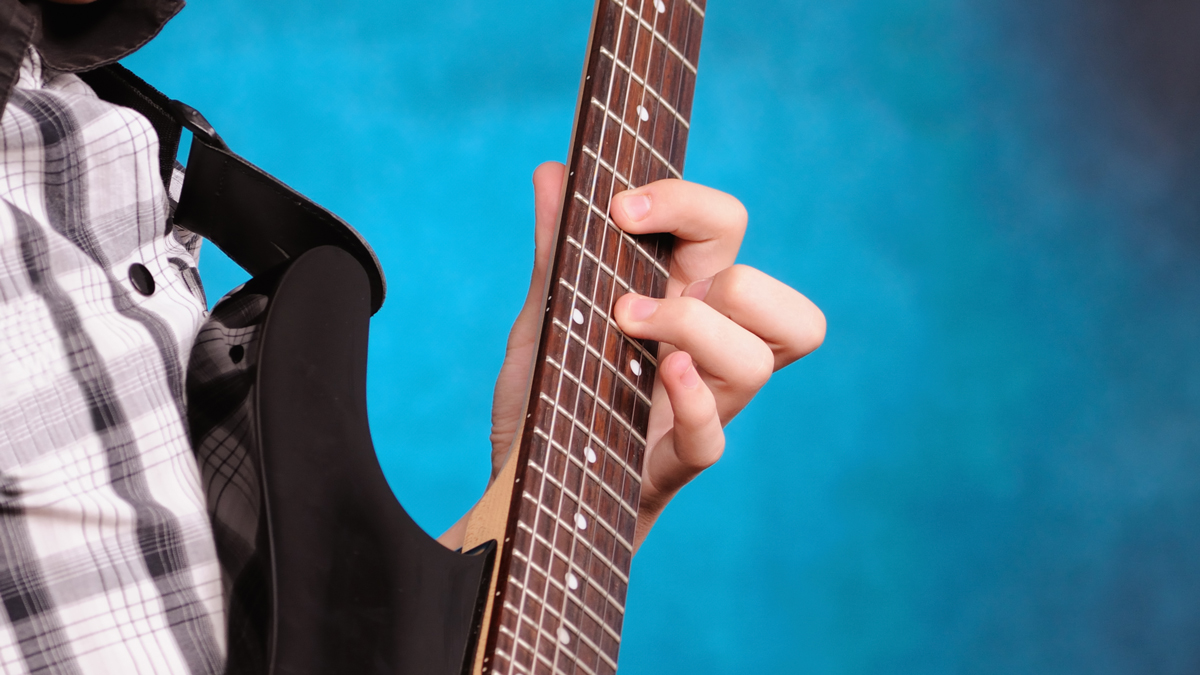
Beginner guitarists, prepare to have your life changed! You can play any power chord you like with just one shape. It’s easier than most open chords and with a distorted guitar tone it actually sounds better.
Regular major and minor chords contain three notes: a root note, a 3rd (which can be major or minor, ie, a different note), and a 5th. A power chord leaves out that 3rd interval – the most colourful note – leaving just two notes. So, because power chords are neither major nor minor, you can use one shape for almost everything.
Many power chord riffs are played with palm-muting, which creates a chunky, percussive sound. To do this, place the side of your picking hand on the strings just where they leave the bridge saddles. Keep as close to the bridge as possible: too far and you’ll hear an unmusical clunk. In the right place you’ll hear the usual notes, just with a tighter attack and less sustain.
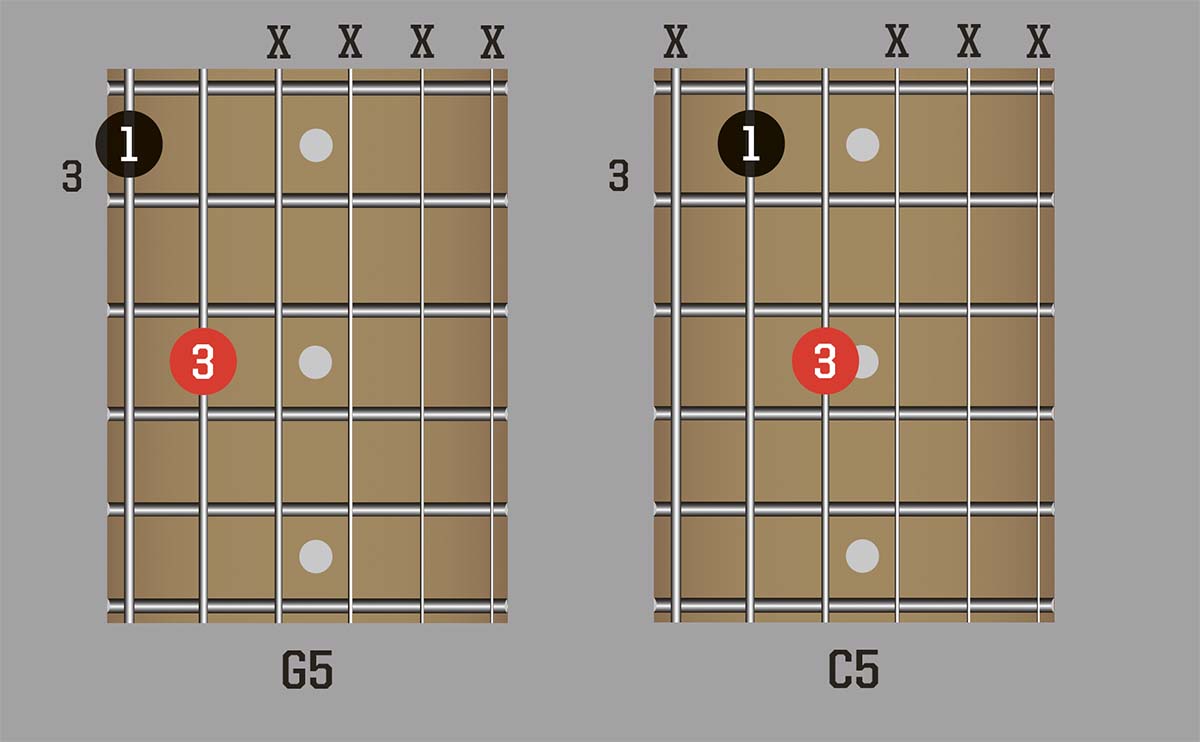
These are the two (very similar) shapes you need to know. For a fatter sound, try fretting the fourth string with your fourth finger on the G5 chord.
Technique check: get your fingers in prime position and your power chords will rock!
1. ‘CLASSICAL’ THUMB POSITION
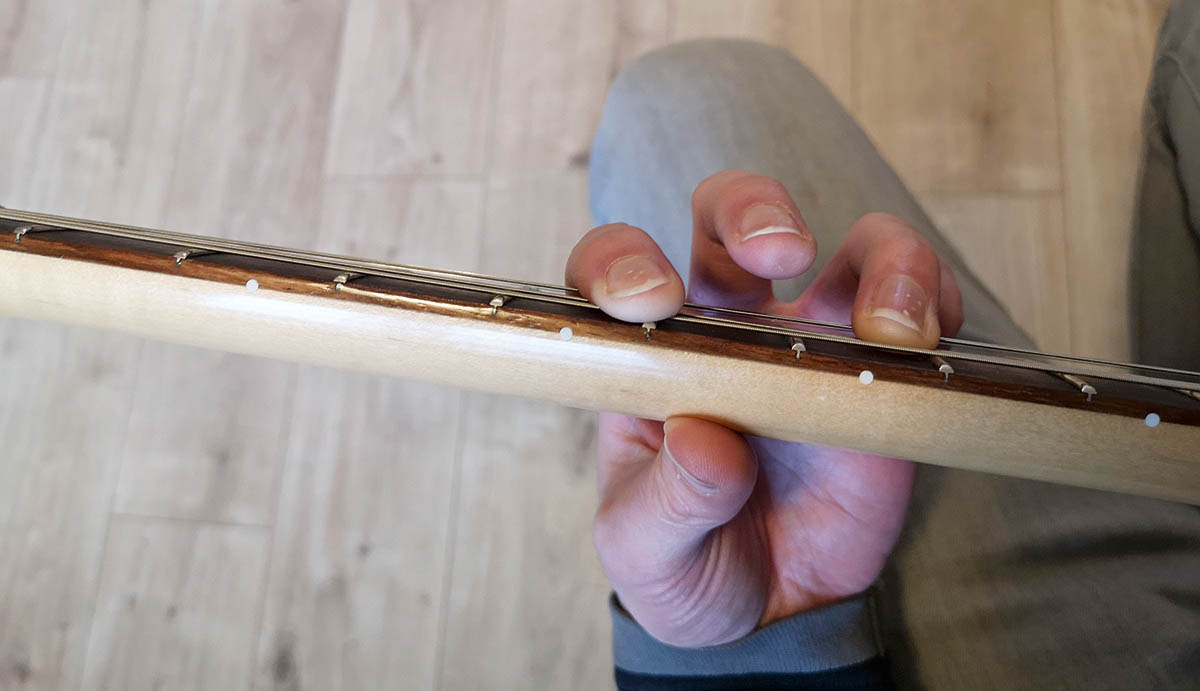
Keep your thumb centred on the back of the neck roughly opposite on of your fretting fingers for maximum strength and stretch.
2. ‘COLLAPSED’ THUMB POSITION
All the latest guitar news, interviews, lessons, reviews, deals and more, direct to your inbox!
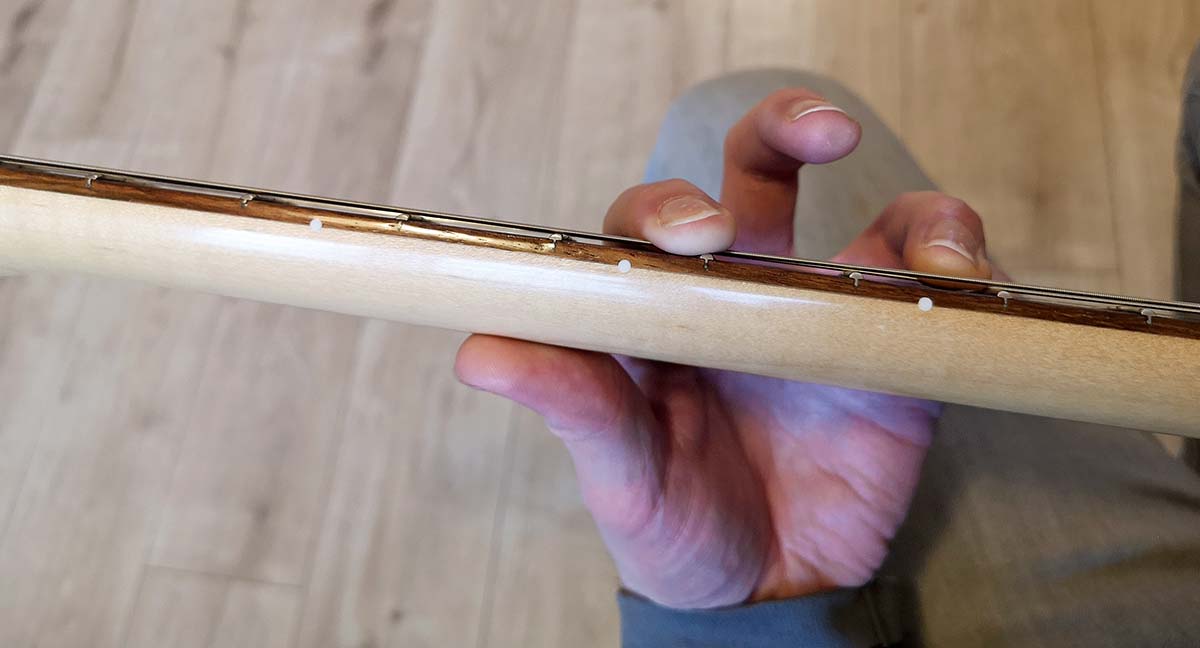
Players like Billie Joe Armstrong who wear their guitar low prefer this thumb position for power chords, which can enable a more relaxed wrist.
3. STUBBING
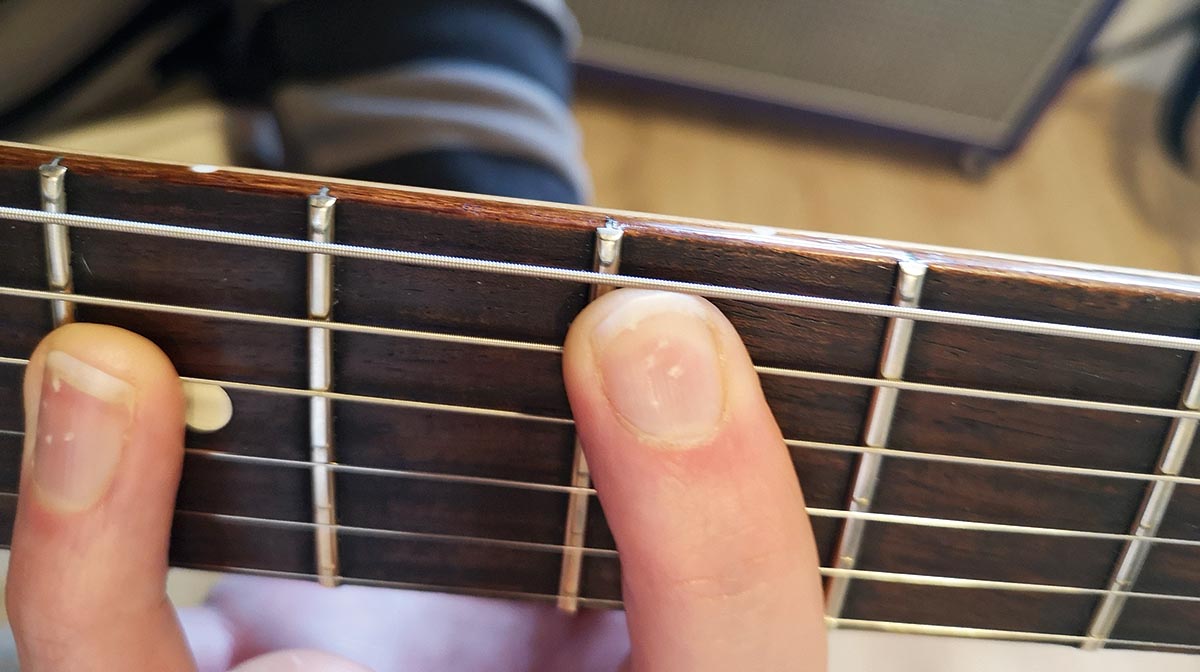
If your low E string keeps ringing out, you can ‘stub’ the tip of your index finger against it to mute it out.
4. PALM-MUTING

This is where your hand should be for palming muting: resting against the bridge saddles for the strings you want to mute.
1. Hard-rock power chords
This is a classic hard rock style power chord riff, but you could apply it to punk and metal, with a bit of sonic experimentation. Try to maintain the power chord ‘shape’ with your fingers all the time, so when changing chords you just drop your hand into position.
2. Gradual palm-mutes
This riff will help you develop the skill of switching quickly between palm-muted and unmuted picking – essential for punk and metal rhythm parts. Palm-muting is fairly easy – you just need to find the right spot for your hand. Gradually releasing the palm-mute is more of a challenge, so practise slowly.
- Looking for a new guitar? These are the best beginner electric guitars
- Give you playing a boost with the best online guitar lessons
Chris was Editor of Total Guitar magazine from 2020 until its closure in 2024, when he became Lesson Editor for Guitar World, MusicRadar and Guitar Player. Prior to taking over as Editor, he helmed Total Guitar's world-class tab and tuition section for 12 years, helping thousands of guitarists learn how to play the instrument. A former guitar teacher, Chris trained at the Academy of Contemporary Music (ACM) in Guildford, UK, and held a degree in Philosophy & Popular Music. During his career, Chris interviewed guitar legends including Brian May and Jimmy Page, while championing new artists such as Yungblud and Nova Twins. Chris was diagnosed with Stage 4 cancer in April 2024 and died in May 2025.



